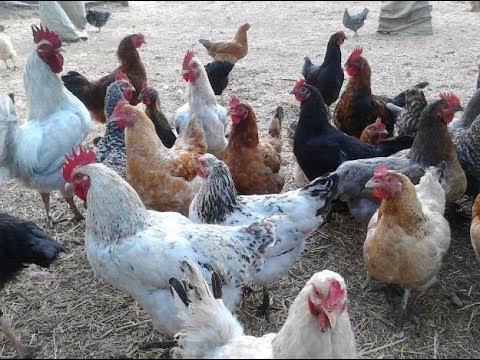

Many Ugandans have taken on Kuroiler chicken rearing for both eggs and meat. This is because Kuroiler chicken breed which has indigenous traits, grows faster and lays more eggs than local chicken. However, some farmers have not mastered the dos and don’ts of rearing Kuroiler chicken. Here are some of the tips on how to do well.
Tips
A farmer who is begining to rear Kuroilers should start the enterprise by buying at least one month old chicks and not one day-old ones. This is because day-old chicks need a lot of care in terms of vaccination, provision of warmth and feeding. When starting such an enterprise most farmers don’t have knowledge on how to look after the chicks as such it is advisable that they buy one- month-old ones which are not so delicate to farm.
The poultry house should be well aerated, meaning that it should have free movement of air.
Air should be able to flow in and out easily without anything obstructing it. This can be achieved by constructing side (walls) parts of the house with wire mesh. If air moves in and out freely and when a disease attacks the chicken, they will not be severely affected as some of the air the birds breath out will be blown away from the poultry house.
Additionally, the poultry house should not have big holes where birds or chicken on free range can access entry and mix with the Kuroiler as this can lead to bird mite infestation or transmission of poultry diseases.
The poultry house should big enough to provide enough space for the birds. For instance, a room of 10 by 10 feet should not accommodate more than 30 Kuroilers.
Less space
Less space creates stressed social behaviour, allowing disease vulnerability and cannibalism and leaving weaker birds deprived of feed or perch space. Individual birds need more room for normal behaviour and adequate exercise.
Farmers should not place poultry feeders and drinkers on the floor. They should be elevated for easy drinking and feeding. However, for the chicks below one month, they should be fed and given water in feeders and drinkers high enough to keep the water level between a chick’s eye and the height of its back.
How to handle mash
Chicks shouldn’t be able to roost over or step in the water or feeds as they will end up passing droppings in it, which will spread diseases. The Kuroilers should be provided with clean water all the time and the drinkers should be washed every day before putting water in them. Diseased or birds suspected to be sick should be isolated immediately in order not to infect others. The isolated birds should be treated and given care from the isolation room.
Changing sources of feeds is important thing. Each feed producer or manufacturer has his/ her own formulas. Therefore, if a farmer changes his feed source, the growth of the Kuroilers will not be stable and if they are for eggs, their egg production will not be constant. Farmers shouldnot rear Kuroilers for more than four months if they are for chicken. The more days you rear the birds will mean reducing on the profits a farmer would get because a farmer will most likely not be paid any extra money for the birds by rearing them for more time well as each day they remain unsold they feed and drink water.
Advantages of Kuroiler
• Early Maturity – Kuroiler chickens start laying eggs at five months. At four months, they are ready to be sold as broilers.
• Higher production than their kienyeji counterparts – When they start laying eggs at five months, Kuroiler chicken lay continuously for two years. One Kuroiler chicken averages about 150 eggs a year, compared to their indigenous counterparts that average 40 eggs per year. At four months, Kuroiler birds being raised for meat will weigh 3.5 kilogrammes for Kuroiler roosters and 2.5 kilogrammes for hens.
• Cheaper production costs – Kuroiler chicken can be reared in free-range or semi free-range conditions of their indigenous counterparts. They can live entirely on kitchen remains agricultural waste and scavenging for worms and other insects. This means even poor farmers can manage to raise Kuroiler chicken without straining, hence improving their livelihoods.
• Hardy – Kuroiler chicken can survive in harsh climates, whether cold or hot. This means poultry farmers in arid and semi-arid areas can keep Kuroiler chicken.
• High Hatchability – Kuroiler eggs have a hatchability rate of 80 per cent, meaning 8 in every 10 eggs will hatch
• Scavenge well and feed continuously – Kuroiler chicken will look for food throughout the day. This means if good scavenging conditions exist, they will gain weight faster, produce more eggs at low or zero cost of chicken feeds.
Breed profile.
The Kuroiler chicken is reared for both meat and eggs. It is a dual purpose breed. It is a hardy breed that can live on just eating agricultural and kitchen waste. Most indigenous chickens lay an average of 40 eggs per year, while Kuroiler lay about 150 eggs per year, while only feeding on agricultural and kitchen leftovers.
 Contact Jaguza Support
Contact Jaguza Support